2010 Preview
The Big Ten
Ten key technology, business and regulatory trends that will impact HME this year.
- By David Kopf
- Jan 01, 2010
Welcome to the third annual edition of HME Business’s yearly preview. Like previous installments, we are profiling 10 key industry trends that have the potential to impact your business in meaningful waysfor either the better, or the worst.
As with our 2009 Big Ten list, we aren’t limiting our choices to only product categories. In addition to product categories, we also have highlighted some key business and regulatory trends and opportunities HME providers will want to monitor and leverage. Likewise, many product categoriesand business trends are interrelated.
So, without further ado, the 10 key HME business, regulatory andproduct trends that we think will impact HME businesses in 2010 are:
- Competitive Bidding
- Healthcare Reform
- PECOS & Other CMS Deadlines
- Oxygen
- Power Mobility
- Cash Sales
- Expanded Provider Resources
- Software
- Operations Efficiency
- Training and Professional Education
It goes without saying, but this list isn’t the be all, end all summation of everything you can expect this year. The 10 segments we’ve selected aren’t the only trends you’ll want to monitor during 2010. For instance, there are several product and patient categories that will remain important to HME providers during 2010, such as bariatrics, bath safety, and other access products. Additionally, the sleep marketplace will remain important as an expansion opportunity for HMEs (To read more about sleep services in this issue, see “Getting a Sound Sleep”)
In any case, we believe the industry segments we’ve defined will shape the industry over 2010, and some might provide you with opportunities to not only survive the challenges the industry faces, but perhaps even grow your business, as well.
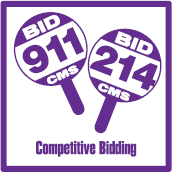 Competitive Bidding
Competitive Bidding
Bar none, the biggest challenge facing the industry for 2010 is competitive bidding. For most of 2009, the HME industry enjoyed a respite from competitive bidding, but NCB has since reared its ugly head, and HMEs must again contend with this pronounced threat to not only DME funding, the industry’s viability.
In 2008, competitive bidding was brought to a halt by the Medicare Improvements for Providers and Patients Act, which delayed the program for 18 to 24 months in order to review the program and determine how it could be improved. The reason for this was the calamitous results of Round One. Of the more than 1,000 providers bidding, 63 percent were disqualified, and low-ball bids slashed funding by 26 percent on average across 10 DME categories. Moreover, some winning bidders actually had no physicalpresence in the competitive bidding areas where they won.
During the 2009 delay, CMS tried to address round one’s considerable flaws, but the deeper problems in its structure were not addressed at all (to read more, see “GAO Confirms Round One’s Multiple Failings,” in News, Trends & Analysis, starting page 8). And, before providers could catch their breath, CMS launched into its re-bid of Round One, with thebidding opening late last October, and concluding just before Christmas.
While many providers in the re-bid’s bidding areas have submit bids, the industry is still fighting tooth and nail to stop the program. The latest development is H.R. 3790, a bill introduced by Rep. Kendrick Meek (DFla.), which calls for the elimination of the competitive bidding program.
At press time, the bill has 97 co-sponsors, and the industry is engaging in a variety of campaigns organized at the state and national level calling for lawmakers to support the legislation and end the misguided policy.
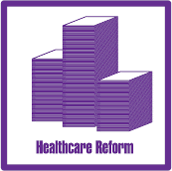 Healthcare Reform
Healthcare Reform
While healthcare reform represents a unique opportunity for America to correct its healthcare system’s problems, the efforts to reform its healthcare system under the Obama Administration didn’t take long before they became muddied by various political concerns.
And, in an all-to-familiar course of action, Congress has often set its sights on the HME industry as a way to help cut costs for taxpayers. Various healthcare reform proposals coming out of the House and the Senate have contained various HME cuts ranging from oxygen to power mobility to even excise taxes on manufacturers of DME. Moreover, the Senate Finance Committee’s healthcare reform legislation proposes to expand CMS’s authority to apply competitive bidding pricing beyond competitive bidding areas and would increase the Round Two’s number of CBAs from 70 to 100.
This is extremely unfortunate and short-sighted given homecare’s ability to save taxpayers untold billions by offering an alternative to hospital stays, which ring in at many times the costs of home health alternatives. Not to mention homecare’s typically improved patient outcomes in comparison to hospital stays. Instead, Congress is playing the same old game with HME, and that should leave providers resolute in their drive to lobby on behalf of their industry.
As of press time, debate over healthcare reform has been stalled by seemingly intractable partisanship between Republicans and Democrats. Throw in Sen. Joe Lieberman (D-Conn.) pushing for less reform in the reform package, and increasingly frustrated progressive Democrats getting fed up with the process, and whatever is on the table could quickly go off it as the GOP aims to ensure President Obama experience a major political loss during his first term.
As they say, politics makes for strange bedfellows, and the industry might find itself sometimes agreeing with the very same Republican Party that made life so difficult for HMEs during the Bush administration. While the country might need health reform, it needs HME to be part of that reform — whether it realizes it or not. Thusly health reform’s current legislative paralysis could work to the industry’s favor, at least for the short term.
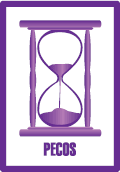 PECOS & Other CMS Deadlines
PECOS & Other CMS Deadlines
While higher profile regulatory issues shaped industry discussion and debate for much of 2009, the year finished off with a kind of CMS “sneak attack” that took nearly the entire industry by surprise. This, of course, was PECOS. Short for Provider Enrollment, Chain and Ownership System, PECOS is an online system to which physicians and other healthcare practitioners in the Medicare system had to register.
What confused matters and threw the industry into a panic was that starting Oct. 5 providers began receiving warnings that physicians not registered in PECOS by Jan. 4, but were still making DME orders or referrals would cause those Part B claims to be rejected. So it was left to HMEs to ensure physicians and other referring healthcare professionals are registered in PECOS in order for DME claims coming from those referral sources to be approved. This prompted an outcry from not only the HME industry, but physicians groups and others who called on CMS to delay the deadline.
Based on that industry pushback, CMS delayed until April 5 the implementation of the second phase of two change requests that would have blocked funding for DME ordered from physicians and other healthcare professional not registered in PECOS. Given that many providers responding to HME-Business.com online surveys conducted in October and November noted the overwhelming majority of their physicians were not in the PECOS system, hopefully the four-month delay is enough.
PECOS speaks to a trend in relations with CMS that might continue to color 2010: what appears to be almost a “strategy” to let deadlines related to seemingly innocuous procedural deadlines hover just below the radar of homecare industry even though these deadlines could have devastating effects. (If the PECOS deadline were not delayed, it’s conceivable that many providers could have been shuttered.)
For example, another paperwork challenge providers will face is the possible requirement to provide documentation of ongoing medical need for DME claims, as briefly outlined in the Fall 2009 DME MAC Insider. Additionally, letters were sent to all DME MAC medical directors saying that Medicare needs them to tighten up claim documentation. As part of that tightening up, providers must show that within six months of a claim that a patient went to the doctor, and that the doctor wrote something in his notes about the patient’s continuing use and need for oxygen so that the claim can be approved. Like PECOS, this has the potential to be a disaster for providers, and could be a particular problem for claims for patients with life-long conditions, such as mobility patients or oxygen patients.
 Oxygen
Oxygen
There’s no nice way to put it: Oxygen providers had it rough in 2009. No segment of the HME industry suffered more than oxygen providers. Among the bitter frustrations they had to contend with during 2009 were the fact that the 36-month oxygen equipment rental cap began to make its impact this year; oxygen was one of the DME categories that had to shoulder the 9.5 percent funding cut per MIPPA; and delivery-focal oxygen providers suffered a continuation of 2008’s high fuel prices.
Not surprisingly, the ranks of oxygen providers have been thinned. The Accredited Medical Equipment Providers of America (AMEPA) reported in November that the number of oxygen providers in certain U.S. counties were down by roughly 50 percent. AMEPA said that a search of Medicare’s online listings showed that, in Los Angeles County, Calif. there are only 120 oxygen providers remaining, compared to 258 in April 2008. Oxygen providers in Miami-Dade County, Fla. plummeted from 401 to 205 over the same period.
Moreover, industry legislative efforts on behalf of oxygen providers presented equal frustration. After some internal debate and then consensus building, the industry worked with Rep. Mike Ross (D-Ark.) to create a set of oxygen reforms that would have repealed the 36- month rental cap; maintained supplier status for HME providers who furnish home oxygen therapy; eliminate the adjustment provision was eliminated; and implement a cost survey to be completed by a statistically representative sample of suppliers each year rather than by all oxygen suppliers.
Ross presented the oxygen reform legislation to the House Energy and Commerce Committee in the form of an amendment during markup of the House health reform bill, H.R. 3200, but before much momentum could be put behind the effort, the Congressional Budget Office raised issues regarding it’s “scoring” in terms of its budget neutrality. Add to that the fact that much of the legislative momentum in the House shifted to another healthcare reform bill, H.R. 3962, and the industry’s reforms were left stalled.
Oxygen providers will face a similarly inhospitable environment during 2010. The key for them will be to find business models that take as much operating cost out of their budgets as possible. Obviously, this means a drive to transition to non-delivery, but non-delivery’s up-front costs can often make this a difficult transition for some providers. Bearing that in mind, they must seek other operations efficiencies, and seek to diversify their business models. Branching out into serving patient segments that complement oxygen businesses, such as sleep, will become critical inensuring providers can maintain incoming funding.
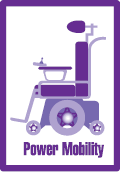 Power Mobility
Power Mobility
We have highlighted power mobility as a key factor in our Big Ten lists since we started, and this year is no different. Power mobility is a key DME category serving a wide variety of patient populations, and it has been and will continue to be beset by a number of legislative and funding pitfalls that providers must avoid in order to stay in business and continue serving patients.
A large threat facing mobility providers are still contending with is the 9.5 percent cut that was sustained in the wake of MIPPA, and the fact that round one of competitive bidding is being re-bid. While complex rehab chairs will not be a part of that bid process, standard power mobility is still being affected.
Another major threat to power mobility funding is efforts to eliminate the first month purchase option. Nearly all power wheel chairs are purchased in the first month since the mobility limitations of their users are typically life-long conditions, but there have been pushes to force providers to “rent” them out for the full 13 months. This would have resoundingly negative effects on providers’ cash flow. Efforts to eliminate the first-month purchase have been part of proposed healthcare reform packages, and the House Energy and Commerce Health Subcommittee recently discussed reforming the first-month purchase option, as well.
In terms of technology, there has never been a better period for providers and patients in terms of the power mobility options available. From simpler power wheelchairs all the way to complex rehab, 2010 looks to continue the trend of new enhancements and advancements that 2009 enjoyed. Recent developments include advances in power chair drives that make it easier for patients to safely maneuver through uneven terrain obstacles, thus expanding their range of mobility and access. Also, power chairs are increasingly adapting to patients’ lifestyles with features such as enhanced displays that let users control other items beyond their chair. Additionally, manufacturers have grown more creative in the way they design various chair functions so as to maximize battery life along with features.
 Cash Sales
Cash Sales
For businesses that once derived 80 percent of their income from Medicare funding , 2009 showed providers that they clearly needed to make find new revenue streams. For starters, MIPPA required the industry to agree to 9.5 percent funding cut across the categories that fell under competitive bidding in order to delay the program.
Add to this the difficulty many providers faced with state Medicaids, and an overall economic slump that decreased the number of patients with private payor insurance, and providers needed to start finding new sources of revenue. Thusly, they made solid headway in retail, or “cash” sales. Cash sales supply providers with a reliable means to increase their financial stability by infusing their bottom line with a more timely cash flow. There’s no paperwork or auditing required to sell a pair of compression hoses or a bed rail to a patient, or their family member, with cash in hand.
With the re-bid of round one in full swing, and MIPPA’s 9.5 percent cuts remaining, as well as declines in oxygen funding and threats the first-month purchase option for power mobility, providers must continue to commit themselves to cash sales in 2010. It will be a key element in their efforts to maintain their cash flow.
Retail DME has a number of patient appeals. Most products are very affordable that even patients with funding will buy in addition to their covered items, because those retail items serve their needs. They range from inexpensive “impulse buy” items sold at the point of sale to higher priced items. There are a variety of aids to daily living, bathing aids, accessories and other items that various patient groups desire and buy. Some high-ticket items are retail items. For example, home access items such as vertical platform lifts are not covered by Medicare but are greatly needed by patients with mobility limitations.
 Expanded Provider Resources
Expanded Provider Resources
HME Business first began covering the importance of expanded provider resources in 2009. These services will continue to be a key element in providers’ strategies and operations during 2010. What are they? Essentially, there are a number of services available to providers for free or at comparatively low prices from manufacturers and other vendors, and providers must take advantage of them when possible.
As providers’ funding has been hit in various ways, they must still cover the costs of running HME businesses, which puts them in a precarious position not only in terms of maintaining cash flow and margins, but also from a strategic standpoint. How can they stay ahead of the competition when they are simply trying to survive?
This is where the expanded resources available to them become critical. There are a variety of vendors and other organizations providing expanded resources to HME providers. Some vendors are rolling out whole suites of support services to help providers that include enhanced service plans with networks of field technicians; billing and
collections; marketing support and materials; and even partnering up with providers of HME billing and management software.
And even smaller vendors, such as manufacturers of cash sales products are beginning to offer enhanced support to providers. These smaller vendors have begun doing this through special retail displays, literature and other items that help sell their products, but they have also branched out by providing online education and similar offerings.
They key to taking advantage of these services is to work with your reps from vendors and any MSOs or buying groups and begin finding out what is available. Then start looking at how these services could be fit into your business model, and budget. Then, use them.
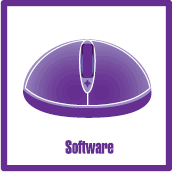 Software
Software
Software continues to be a key asset for providers as they seek to improve their business performance and become as lean and as profitable as possible in a marketplace marked by declining cash flow and cost management.
HME software systems assist providers by helping them stay on top of their billing and minimizing DSOs, and provide a standardized means of entering and tracking all billing information to provide fast data access for following up on claims and collecting receivables.
In addition to billing, HME software offerings also help providers electronically manage all their patient data and their coverage so that staff can quickly answer questions correctly, without having to dig through records. Also, document-imaging systems are helping providers toss costly paperfiling models, while making it easier for them to live up to all their documentation requirements per accreditation, etc.
Other benefits include enhanced customer communications, and inventory management and reporting tools that help providers discover other ways to increase efficiency, or identify opportunities to serve new patient needs. And, when it comes to cash sales, providers are now able to chose from point of sales systems that are designed to directly connect to their HME software, thus turning their cash sales implementations into nearly turnkey affairs.
For providers using web-based and other hosted HME software systems, they have also gained access to tools to help them network, identify possible referral partners, and even buy and sell DME.
Needless to say, the image of providers with cobbled-together billing systems is quickly fading into obscurity as HME-specific software gives them the power to bob and weave through tricky funding environment and flexibly respond to new regulatory and market challenges.
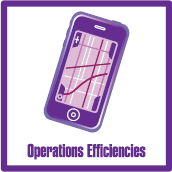 Operational Efficiency
Operational Efficiency
As we have said, with such bleak funding prospects and formidable legislative challenges to come in 2010, providers are looking to cut costs, protect and maximize cash flow, maintain margins and leverage new opportunities when possible. In order to do this, increased attention is being placed on improving operational efficiencies.
Many providers are finding new ways to gain these efficiencies by leveraging technologies. For instance, route planning and GPS are becoming increasingly important to providers with delivery intensive business models. By developing more efficient routes, optimizing vehicle mileage and wear and tear, and creating a more responsive network of drivers, providers can not only drive down costs but ramp up service. Also, providers are also increasingly using advances such as handheld devices both in the field and in the back office to increase efficiency. Whether they are pulling orders or delivery DME, they can automatically update inventory, check prices, process transactions, and even take patient signatures.
 Training and Professional Education
Training and Professional Education
The current funding environment is difficult, and if competitive bidding progresses, the marketplace will be even more difficult. In that kind of environment, a provider cannot afford to ignore any asset that might help find new efficiencies, help differentiate itself from competitors, or uncover new opportunities in such a difficult funding landscape. Margins are down and providers must develop new skillsets that can help them survive the tough times, so they can thrive in the future. Professional education for both staff and management is critical in this regard.
From a business standpoint, professional education can help HME business owners increase their operational efficiencies by learning and implementing best practices and new technologies in their business. This can benefit their relationships with patients and referral partners. Patients and referral partners can feel a certain level of trust working with a business they know has made a commitment to stay up-to-date on industry and healthcare developments and changes. They know that provider is constantly trying to improve service, meet high quality of care standards, and is committed to positive, strong patient outcomes.
By raising the bar in terms of staff expertise and education, providers also raise the industry’s profile with lawmakers making decisions that affect providers’ funding and the regulatory environment in which they work. This will be an important asset when meeting with lawmakers and staff in 2010.
And, of course, professional education and continuing education is required for the many clinical and therapeutic specialists working for HMEs that hold special credentials and licenses. They must continually maintain and update their skills and knowledge to demonstrate they are aware of and understand the latest developments in their field of expertise.
A good place to get started in training is to look at the options available. There are a number of sources of professional education in the HME industry. First, there are traditional providers of professional education, such as industry educators and member service organizations and buying groups. Second, there are the manufacturers, which have been offering education to providers in order to help them be more successful businesses — and customers.
This article originally appeared in the January 2010 issue of HME Business.